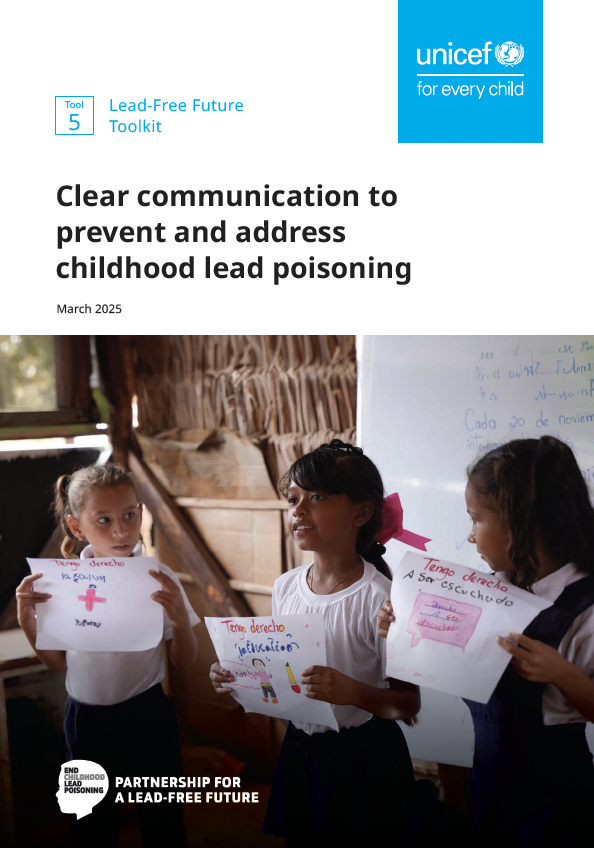This tool supports communication professionals working on lead exposure issues in LMICs. It provides an overview of different communication and advocacy strategies that can be utilized according to target audiences: policymakers, service providers, caregivers and the private sector. It includes examples of best practices and applications of communication theory in different real-world case studies from work conducted in Georgia, Bangladesh, Indonesia, Ghana and the United States.
This tool is intended to be used as part of the Lead-Free Future Toolkit, under development by a working group led by UNICEF. The purpose of the Toolkit is to help accelerate action to end childhood lead exposure. Target audiences include staff members of ministries of health and environment, international organizations and non-governmental organizations (NGOs) with moderate to no experience in childhood lead poisoning and its sources. This tool and the rest of the Toolkit should not be taken as representing the views of the authors or the organizations with which they are affiliated, nor should it be viewed as definitive. It will be revised on a rolling basis as new information becomes available.
